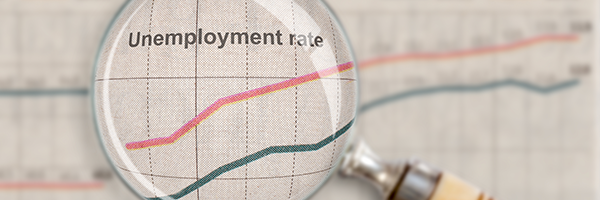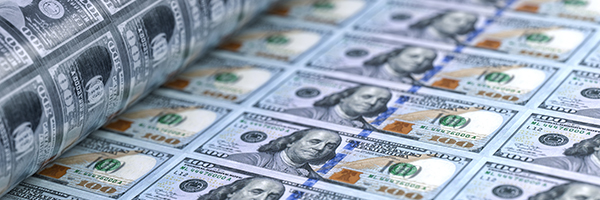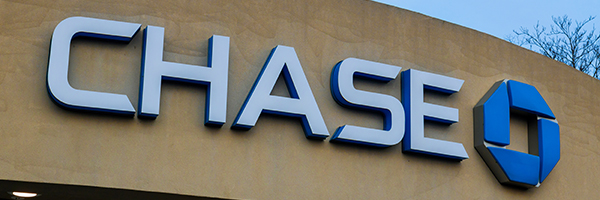
May 14, 2024 | Daily JAM, Morning Briefing, Short Term |
Granted that the remarks weren’t delivered at the most high profile venue–a panel discussion at the Foreign Bankers Association meeting in Amsterdam–but I read Federal Reserve chairmen Jerome Powell as saying that the U.S.central bank might hold interest rates steady for longer than now expected by WallStreet. Ahead of new inflation data from the Consumer Price Index for April due tomorrow, anyway. On the day before the meeting economists were expecting the annual inflation rate at both the all-time and core levels to have dropped by 10 or 20 basis in April

May 12, 2024 | Daily JAM, Short Term |
I expect more inflation news. What else? On Wednesday, May 15, the Bureau of Labor Statistics will release its report on Consumer Price Index (CPI) inflation for April. Even though the CPI isn’t the Federal Reserve’s preferred inflation measure (that’s the Person Consumption Expenditures (PCE) index, which won’t be released (for April) until May 31), Wall Street is looking for a trend in the CPI report that will point to the inflation rate moving lower convincingly enough so that the U.S. central bank can begin to cut interest rates at its September meeting.

May 10, 2024 | Daily JAM, Videos |
Today’s video is How big a danger is consumer debt? The Federal Reserve has been slowly trying to get inflation down one more percentage point by slowing the economy (without crashing it). One of the things the Fed looks at is how consumers are doing. Consumer revenue is about 70% of the overall economy and consewuently the Fed has been keeping an eye on consumer debt. At the moment, debt as we can measure it, is at a high level with credit card delinquencies at 3.5% in December 2023, the highest since the current data series istarted in 2012. But that number doesn’t capture everything gong on with consumer debt since the increasingly popular Buy Now, Pay Later products aren’t included in the big consumer debt measurements. Thes products let people stretch or delay payments by cutting them into installlments. The Buy now/pay later market is currently only about $18 billion but is projected to hit $700 billion by 2029. What’s th deliquency ratw for Buy now/pay later? No one knows because the companies providing Buy Now, Pay Later programs don’t report delinquencies to credit bureaus. Anecdotally, the delinquwncy rate seems high. A Bloomberg survey found that about 43% of people in Buy Now, Pay Later programs say they’re behind or feeling pressure on their payments. 28% say they’re delinquent on other debt as a result of these payments. Th Fed faces a tough enough job of sailing the economy to a safe harbor without having to steer blind n a big and growing part of the markrt for consumer debt. My worry is that the economy may be slowing faster than the Fed would hope or can accurately measure. Keep an eye on this as the Fed continues to push rate cuts further and further down the road.

May 4, 2024 | Daily JAM, Short Term |
The U.S. economy added 175,000 jobs in April, the Bureau of Labor Statistics announced on Friday. That was the smallest number monthly new jobs in six months. The unemployment rate ticked up to 3.9%. And traders tried once again, to get ahead of the data. Concluding that slower job growth, meant the Federal Reserve would be more likely to cut interest rates sooner–in September, say, rather than November or December–bonds rallied and yields fell. The yield on the 10-year Treasury dropped 7 basis points to 4.5%. The yield on the 2-yer Treasury, which had been flirting with 5% earlier in the week, fell to 4.82%. Stocks climbed with the Standard & Poor’s 500 up 1.26% and the NASDAQ Composite gaining 1.99%. Trouble is that these moves were the exact opposite of gains and losses earlier in the week.

April 30, 2024 | Daily JAM, Morning Briefing |
The employment cost index (ECI), which measures wages and benefits, increased 1.2%, the most in a year, after rising 0.9% at the end of 2023, according to a report from Bureau of Labor Statistics on Tuesday, April 30. The increase was greater than projected by any economist in Bloomberg’s survey of economists.Compared with a year earlier, the ECI, the Fed’s preferred measure of employment costs, climbed 4.2% after a similar annual increase in the fourth quarter.

April 30, 2024 | Daily JAM, Morning Briefing |
Drum roll, please. The Federal Reserve interest-rate-setting body, the Open Market Committee, meets Wednesday afternoon and is expected to do…nothing. The CME FedWatch Tool puts the odds of a rate cut at the May 1 meeting at 3.9%. Odds of cut aren’t much better for the June 12 meeting-7.9%–or the July 31 meeting–22.2%. It’s not until the September 18 meeting that odds get to something like even with the FedWatch Tool showing odds of a cut at 44.8%. With the November meeting odds that the Fed will cut climb to 57%. In my opinion, December is the month for the first cut. But the fact that the Fed won’t move on interest rates tomorrow doesn’t mean that the U.S. central bank will do absolutely nothing.

April 26, 2024 | Daily JAM, Mid Term, Morning Briefing |
Yesterday we had a report of core Personal Consumption Expenditure for March that showed core inflation ticking up to an annual rate of 3.8% from 3.7%. Core inflation, if you remember, looks at prices after excluding more volatile food and energy prices, The reasonable conclusion was that inflation was remaining stubbornly higher than the Federal Reserves % target. And that the first cut to interior rates from the Fed wouldn’t come until December, instead of July or September. Today we got the report on all-items PCE inflation.

April 25, 2024 | Daily JAM, Morning Briefing, Short Term |
U.S. economic growth slowed in the first three months of the year, the Bureau of Economic Analysis reported today. Gross Domestic Product (GSP) grew at an annualized rate of just 1.6%. That’s a big retreat from the 3.4% annual rate in the fourth quarter of 2023. Just as important as the drop in the growth rate itself is the reason for the decline.

April 12, 2024 | Daily JAM, Mid Term |
All good things come to an end. After seven straight quarters of record levels of profits from net interest income, the spread between what earns by lending and what it pays depositors to raise funds, JPMorgan Chase (JPM) reported that net interest income slightly missed analyst estimates for the first quarter. The quarter the company reported today certainly wasn’t a disaster. The bank earned $23.1 billion in net interest income in the period, up 11% from the first quarter of 2023. But the end of the beat and raise guidance of the last year and a half plus an increase in costs were enough to lead to substantial selling today, April 12. The shares finished the day down 6.47% at $182.79. Analysts and investors were clearly hoping for more.

April 11, 2024 | Daily JAM, Mid Term, Morning Briefing |
So why was this so important today? Important enough to send the yield on the 10-year Treasury up another 3 basis points to 4.58%.The Producer Price Index for final demand rose 0.2 percent in March, seasonally adjusted, the Bureau of Labor Statistics reported today. Final demand prices moved up 0.6% in February and 0.4% in January. On an unadjusted basis, the index for final demand increased 2.1% for the 12 months ended in March, the largest advance since rising 2.3% for the 12 months ended April 2023..The March increase in the index for final demand is attributable to a 0.3% rise in prices for final demand services. In contrast, the index for final demand goods edged down 0.1%. Look at the last set of numbers.

April 10, 2024 | Daily JAM, Morning Briefing, Short Term |
In March the Consumer Price Index inflation rate rose more than expected by economists for a third straight month, the Bureau of Labor Statistics reported this morning. That looks to the market today, and to me, like it takes an initial interest rate cut off the table for the Fed’s June 12 meeting. The all-items inflation rate rose by 0.4% in March from February. The 12-month all-items inflation rate rose at a 3.5% rate in March. The core CPI, the inflation rate more important to the Federal Reserve, rose 0.4% month-over-month in March. And at a 3.8% annual rate.

April 8, 2024 | Daily JAM, Morning Briefing |
Yields on the 10-year Treasury rose to the highest since November, climbing to 4.42%. That an increase in the 10-year yield of 25 basis points in the last month. The bond market looks to have given up its hope for three interest rate cuts in 2024 now to be looking now to just two moves by the Federal Reserve in 2024. Wednesday’s release of CPI inflation numbers for March will confirm or reverse that conviction












